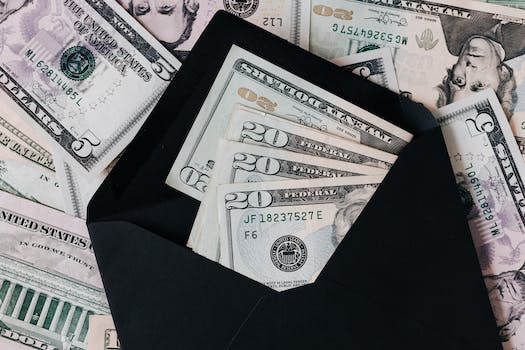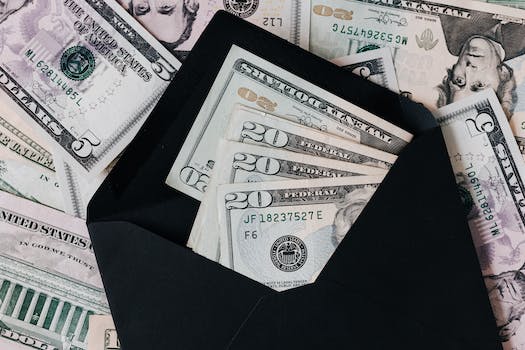How To Put Yourself On A Budget And Save Money
“Take control of your finances and achieve your savings goals with these simple budgeting tips.”
Introduction
Putting yourself on a budget and saving money is an important step towards financial stability and achieving your financial goals. It requires discipline, planning, and a willingness to make sacrifices in the short term for long-term financial gain. In this article, we will discuss some practical tips on how to put yourself on a budget and save money.
Creating a Realistic Budget Plan
Are you tired of living paycheck to paycheck? Do you want to save money but don’t know where to start? The first step is to create a realistic budget plan. A budget plan is a financial roadmap that helps you track your income and expenses. It allows you to see where your money is going and helps you make informed decisions about your spending. In this article, we will discuss how to put yourself on a budget and save money.
The first step in creating a budget plan is to determine your income. This includes your salary, bonuses, and any other sources of income. Once you have determined your income, you need to track your expenses. This includes your rent or mortgage, utilities, groceries, transportation, and any other expenses you have. You can use a spreadsheet or a budgeting app to track your expenses.
Once you have tracked your expenses, you need to categorize them. This will help you see where your money is going and where you can cut back. For example, you may find that you are spending too much money on eating out or entertainment. By categorizing your expenses, you can see where you need to make changes.
The next step is to set financial goals. This can include paying off debt, saving for a down payment on a house, or building an emergency fund. Your financial goals should be specific, measurable, and achievable. For example, if you want to pay off debt, you should set a specific amount that you want to pay off each month.
Once you have set your financial goals, you need to create a budget. Your budget should include your income, expenses, and financial goals. You should allocate your income to your expenses and financial goals. This will help you see where your money is going and where you can make changes.
When creating a budget, it is important to be realistic. You should not set unrealistic goals or try to cut back too much. This can lead to frustration and failure. Instead, you should make small changes over time. For example, you may start by cutting back on eating out once a week. Once you have adjusted to this change, you can make another small change.
It is also important to track your progress. You should review your budget regularly to see how you are doing. This will help you stay on track and make adjustments as needed. You can use a spreadsheet or a budgeting app to track your progress.
In addition to creating a budget, there are other ways to save money. You can look for ways to reduce your expenses, such as cutting back on subscriptions or negotiating your bills. You can also look for ways to increase your income, such as taking on a side hustle or asking for a raise.
In conclusion, putting yourself on a budget and saving money is a process. It requires determination, discipline, and patience. By creating a realistic budget plan, setting financial goals, and tracking your progress, you can take control of your finances and achieve your financial goals. Remember, small changes over time can lead to big results.
Cutting Back on Unnecessary Expenses

Are you tired of living paycheck to paycheck? Do you want to save money but don’t know where to start? Putting yourself on a budget is a great way to take control of your finances and start saving. In this article, we’ll discuss how to cut back on unnecessary expenses and save money.
The first step in putting yourself on a budget is to track your spending. This means keeping track of every penny you spend, from your morning coffee to your monthly rent payment. Once you have a clear picture of where your money is going, you can start to identify areas where you can cut back.
One of the easiest ways to cut back on expenses is to reduce your dining out budget. Eating out can be expensive, especially if you’re doing it multiple times a week. Instead, try cooking at home more often. Not only is it cheaper, but it’s also healthier. You can also try meal prepping on the weekends to save time during the week.
Another area where you can cut back is on your entertainment budget. Instead of going out to the movies or concerts, try finding free or low-cost activities in your area. This could include hiking, visiting a museum, or attending a community event. You can also try hosting a game night or potluck with friends instead of going out.
If you’re a shopaholic, cutting back on your shopping budget can be a challenge. However, there are ways to save money while still enjoying shopping. One way is to shop secondhand. Thrift stores and consignment shops can be a treasure trove of great finds at a fraction of the cost. You can also try shopping during sales or using coupons to save money.
Another area where you can cut back is on your transportation budget. If you live in a city with good public transportation, consider using it instead of driving. Not only is it cheaper, but it’s also better for the environment. If you do need to drive, try carpooling with coworkers or friends to save on gas.
Finally, consider cutting back on your subscription services. While services like Netflix and Spotify are great, they can add up quickly. Take a look at your monthly subscriptions and see if there are any you can cancel or downgrade. You can also try sharing subscriptions with friends or family to save money.
Putting yourself on a budget doesn’t mean you have to give up everything you love. It’s about being mindful of your spending and finding ways to save money without sacrificing your quality of life. By cutting back on unnecessary expenses, you can start to build up your savings and achieve your financial goals.
In conclusion, putting yourself on a budget is a great way to take control of your finances and start saving money. By tracking your spending and cutting back on unnecessary expenses, you can start to build up your savings and achieve your financial goals. Remember, it’s about being mindful of your spending and finding ways to save money without sacrificing your quality of life.
Finding Ways to Increase Income
Are you tired of living paycheck to paycheck? Do you want to save more money but don’t know where to start? Putting yourself on a budget is a great way to take control of your finances and start saving. But what if you’re already living frugally and still struggling to make ends meet? One solution is to find ways to increase your income. Here are some tips to help you do just that.
1. Start a side hustle
One of the easiest ways to increase your income is to start a side hustle. This could be anything from selling handmade crafts on Etsy to driving for Uber or Lyft. The key is to find something that you enjoy and that fits into your schedule. Not only will a side hustle bring in extra cash, but it can also be a fun way to explore your passions and hobbies.
2. Freelance or consult
If you have a particular skill or expertise, consider freelancing or consulting. This could include anything from writing and editing to graphic design or web development. There are plenty of websites and platforms that connect freelancers with clients, such as Upwork and Fiverr. Freelancing or consulting can be a great way to earn extra income while also building your portfolio and expanding your network.
3. Rent out a spare room
If you have a spare room in your home, consider renting it out on Airbnb or another vacation rental platform. This can be a great way to earn extra income, especially if you live in a popular tourist destination. Just be sure to do your research and follow all local laws and regulations.
4. Sell unwanted items
Another way to increase your income is to sell unwanted items. This could include anything from clothes and furniture to electronics and appliances. There are plenty of websites and apps that make it easy to sell your stuff, such as eBay, Craigslist, and Facebook Marketplace. Not only will you earn extra cash, but you’ll also declutter your home and simplify your life.
5. Take on odd jobs
Finally, consider taking on odd jobs to earn extra income. This could include anything from pet-sitting and dog-walking to lawn care and house cleaning. There are plenty of websites and apps that connect people with odd jobs, such as TaskRabbit and Thumbtack. Just be sure to set clear boundaries and expectations with your clients to avoid any misunderstandings.
In conclusion, putting yourself on a budget is a great way to save money and take control of your finances. But sometimes, cutting expenses isn’t enough. By finding ways to increase your income, you can achieve your financial goals even faster. Whether you start a side hustle, freelance or consult, rent out a spare room, sell unwanted items, or take on odd jobs, there are plenty of ways to earn extra cash. So why not give it a try? You might be surprised at how much you can accomplish.
Using Cash Envelopes to Control Spending
Are you tired of living paycheck to paycheck? Do you want to save money but don’t know where to start? One effective way to put yourself on a budget and control your spending is by using cash envelopes.
Cash envelopes are a simple and effective way to manage your money. The concept is straightforward: you allocate a certain amount of cash for each category of your budget, such as groceries, entertainment, and transportation. You then put the cash in separate envelopes labeled with the category name. When you need to make a purchase, you take the cash from the appropriate envelope and use it to pay for the item.
Using cash envelopes has several benefits. First, it helps you stay within your budget. When you have a limited amount of cash for each category, you are less likely to overspend. Second, it helps you prioritize your spending. You can allocate more money to the categories that are most important to you and less to the ones that are less important. Third, it helps you avoid credit card debt. When you use cash, you are not borrowing money that you will have to pay back with interest.
To get started with cash envelopes, you need to create a budget. Start by listing all your monthly expenses, including fixed expenses such as rent or mortgage payments, utilities, and insurance, as well as variable expenses such as groceries, entertainment, and clothing. Be sure to include any debt payments you have, such as credit card or student loan payments.
Once you have a list of your expenses, allocate a certain amount of cash for each category. Be realistic about how much you need for each category, but also be mindful of your overall budget. You may need to make some adjustments to your spending habits to stay within your budget.
Next, label envelopes with the name of each category and put the appropriate amount of cash in each envelope. You can use any type of envelope, but it’s a good idea to use ones that are sturdy and can be reused. You can also use a wallet or a binder with pockets to keep your envelopes organized.
When you need to make a purchase, take the cash from the appropriate envelope and use it to pay for the item. Be sure to keep track of your spending so you know how much money you have left in each envelope. You can use a spreadsheet or a budgeting app to track your spending, or you can simply write it down on a piece of paper.
Using cash envelopes may take some getting used to, but it can be a powerful tool for controlling your spending and saving money. It’s important to be disciplined and stick to your budget, but also be flexible and adjust your budget as needed. If you find that you are consistently overspending in a certain category, you may need to reevaluate your budget and make some changes.
In conclusion, using cash envelopes is a simple and effective way to put yourself on a budget and control your spending. By allocating a certain amount of cash for each category of your budget and using cash to pay for your purchases, you can stay within your budget, prioritize your spending, and avoid credit card debt. Give it a try and see how much money you can save!
Tracking Progress and Staying Motivated
Tracking Progress and Staying Motivated: How To Put Yourself On A Budget And Save Money
Congratulations! You’ve taken the first step towards financial freedom by creating a budget. But now what? How do you make sure you stick to it and actually save money? The key is to track your progress and stay motivated.
One way to track your progress is to use a budgeting app or spreadsheet. These tools can help you keep track of your income, expenses, and savings goals. You can also set up alerts to remind you when bills are due or when you’ve overspent in a certain category. By regularly checking your budget, you’ll be able to see where you’re doing well and where you need to make adjustments.
Another way to track your progress is to use a visual aid, such as a savings jar or a chart. Every time you save money, whether it’s by cutting back on expenses or earning extra income, add that amount to your jar or chart. Seeing your progress in a tangible way can be a great motivator to keep going.
Speaking of motivation, it’s important to find ways to stay motivated throughout your budgeting journey. One way to do this is to set achievable goals. Start small, such as saving $50 a month, and gradually increase your goals as you become more comfortable with budgeting. Celebrate your successes along the way, whether it’s treating yourself to a small splurge or simply acknowledging your progress.
Another way to stay motivated is to find a support system. Talk to friends or family members who are also trying to save money, or join an online community of like-minded individuals. Having someone to share your successes and struggles with can make the process feel less daunting.
It’s also important to remember why you’re budgeting in the first place. Maybe you want to pay off debt, save for a down payment on a house, or simply have more financial security. Whatever your reason, keep it in mind when you’re feeling discouraged. Remind yourself that every small step you take towards your goal is a step in the right direction.
Finally, don’t be too hard on yourself if you slip up. Budgeting is a learning process, and it’s natural to make mistakes along the way. Instead of beating yourself up, use your slip-ups as an opportunity to learn and improve. Ask yourself what you could have done differently and make a plan for how you’ll handle similar situations in the future.
In conclusion, tracking your progress and staying motivated are key to successfully putting yourself on a budget and saving money. Use tools like budgeting apps and visual aids to track your progress, set achievable goals, find a support system, remember why you’re budgeting, and be kind to yourself when you make mistakes. With these strategies in place, you’ll be well on your way to achieving financial freedom.
Conclusion
Conclusion: Putting yourself on a budget and saving money is a crucial step towards financial stability and achieving your financial goals. By tracking your expenses, setting realistic goals, and making conscious spending decisions, you can take control of your finances and build a strong financial foundation for your future. Remember, every small step towards saving money counts, and with discipline and determination, you can achieve your financial goals and live a financially secure life.




